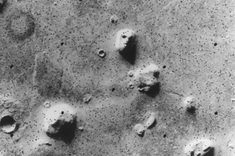Mars bears the scars of five giant impacts, including the ancient giant Borealis basin (top of globe), Hellas (bottom right), and Argyre (bottom left). A new study suggests that Mars experienced a 400-million-year lull in impacts between the formation of Borealis and the younger basins.
Mars enjoyed about 400 million years of relative peace between two giant-impact epochs long ago, a new study suggests.
Researchers determined that there were likely no gigantic impacts on the Red Planet between about 4.5 billion years ago and the “Late Heavy Bombardment ” (LHB) era, which is thought to have lasted from 4.1 billion to 3.8 billion years ago.
“The new results reveal that Mars’ impact history closely parallels the bombardment histories we’ve inferred for the moon, the asteroid belt, and the planet Mercury,” study lead author Bill Bottke, of the Southwest Research Institute and the Institute for the Science of Exploration Targets within NASA’s Solar System Exploration Research Virtual Institute, said in a statement. [The 7 Biggest Mysteries of Mars ]
“We refer to the period for the later impacts as the ‘Late Heavy Bombardment,'” Bottke added. “The new results add credence to this somewhat controversial theory. However, the lull itself is an important period in the evolution of Mars and other planets. We like to refer to this lull as the ‘doldrums.'”
Bottke and co-author Jeffrey Andrews-Hanna, of the University of Arizona’s Lunar and Planetary Laboratory, studied the most ancient large impact basin on Mars — a nearly 6,000-mile-wide (9,650 kilometers) behemoth called Borealis that covers most of the Red Planet’s northern hemisphere.
Bottke and Andrews-Hanna found that Borealis’ rim was gouged by just one big, later impactor, which created another basin known as Isidis. This result set strict constraints on the number of large objects that could have pummeled Mars after the Borealis body hit, the researchers said.

0 of 10 questions complete
Previous work had already associated Isidis and two other big-impact basins, known as Hellas and Argyre, with the LHB. These three huge craters are similar in appearance to Borealis (though considerably smaller), suggesting that any sizable impact basins that formed in the interim between the birth of Borealis and the LHB should be preserved to roughly the same degree.
But no such basins are visible, indicating the presence of a long-ago lull in giant impacts on the Red Planet, the researchers said.
Bottke and Andrews-Hanna also got an idea of just how long this lull lasted, by dating Borealis’ birth.
“We argue the age of Borealis can be deduced from impact fragments from Mars that ultimately arrived on Earth,” Bottke said in the same statement . “These Martian meteorites reveal Borealis to be nearly 4.5 billion years old — almost as old as the planet itself.”
The new study was published Tuesday (April 25) in the journal Nature Geoscience .
Follow Mike Wall on Twitter @michaeldwall and Google+ . Follow us @Spacedotcom , Facebook or Google+ . Originally published on Space.com .

Comments are closed.